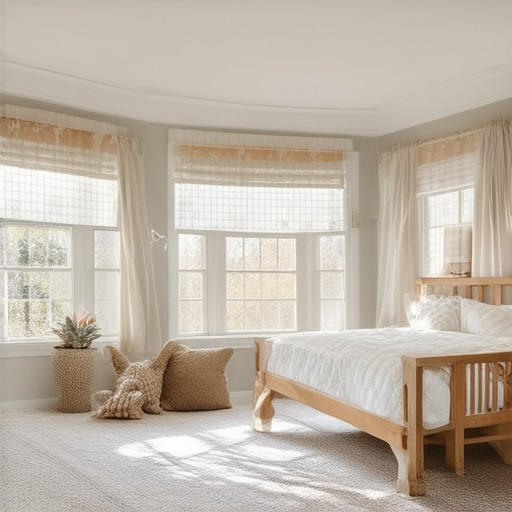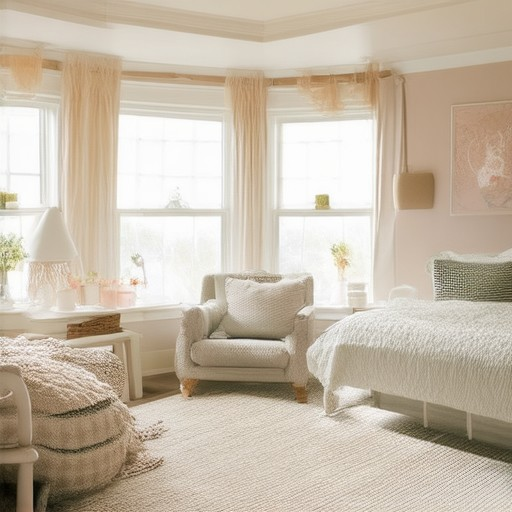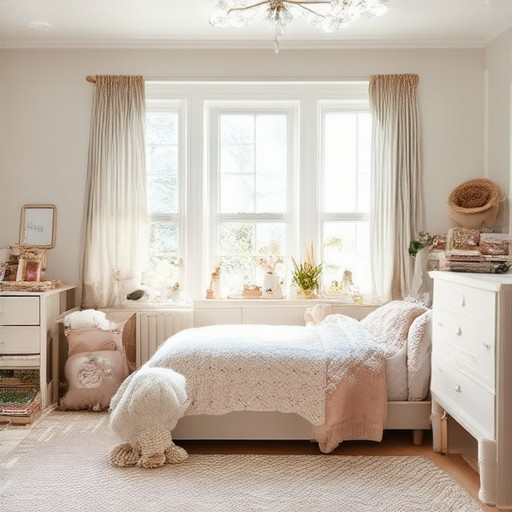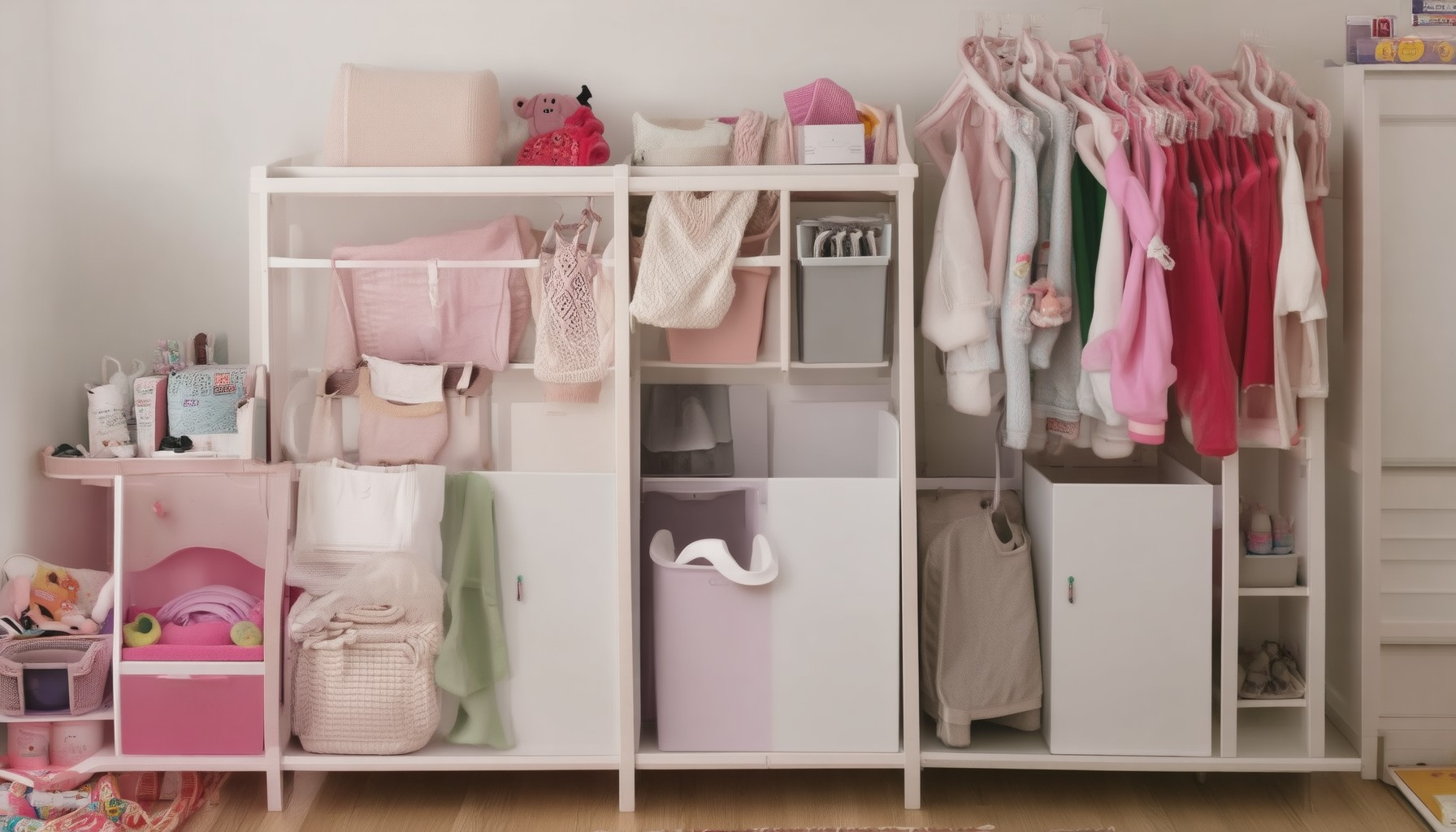Organizing a kids’ room can feel like an overwhelming task, especially when faced with an abundance of toys, limited space, and the constant need for flexibility. Whether you’re dealing with a chaotic playroom, a cramped bedroom, or a shared space that serves multiple purposes, achieving kids room organization nirvana might seem elusive. However, with the right approach and clever use of storage solutions, it’s entirely possible to transform your home into a haven of order and efficiency. IKEA offers a wide range of innovative storage options that not only maximize space but also cater to the unique needs of families, whether you’re managing ADHD-friendly environments or simply looking to declutter and streamline your living spaces. In this comprehensive guide, we’ll explore practical tips, creative layouts, and sustainable strategies to help you achieve the perfect kids’ room organization setup, ensuring your family thrives in a tidy and inviting atmosphere.
Key Takeaways
- Maximize Safety: Install soft flooring, use low-height furniture, and choose safe bed orientations to create a secure environment for your child.
- Efficient Storage: Utilize IKEA drawer organizers and open shelves to keep toys and books neatly stored and easily accessible.
- Well-Lit Spaces: Set up overhead lighting, table lamps, and nightlights to ensure the room is brightly lit and comforting for bedtime.
- Thoughtful Furniture: Select twin or low-height beds with built-in storage to save space and keep the room organized.
- Kid-Friendly Design: Opt for vibrant colors, soft textures, and removable decor to create a lively and easy-to-update space.
- Cozy Comfort: Create a welcoming atmosphere with a reading nook equipped with cushions and a lamp for relaxation.
- Practical Layouts: Incorporate changing tables with drawer storage for convenient organization and easy access to essentials.
- Modular Flexibility: Use IKEA’s dividers and modular furniture to define separate zones for play, study, and sleep, maximizing the room’s versatility.

Organizing Your Kids’ Room with Too Many Toys
To effectively organize your kids’ room with too many toys, follow these organized steps:
- Assess the Space: Begin by evaluating the available floor space and identify areas where toys can be grouped logically.
- Group Similar Toys:** Place identical items together, such as building blocks, cars, and art supplies, in separate corners of the room.
- Utilize Storage Solutions:** Install shelving units or cabinets to store larger toys and organize smaller items into labeled bins from Target or Amazon .
- Maximize Vertical Space:** Use under-bed storage drawers and wall-mounted shelves to store dolls, stuffed animals, and other items, keeping floors clear.
- Store Small Parts:** Use trays or baskets to collect tiny puzzle pieces or other small components, placing them near the play area for easy access.
- Repurpose Closet Space:** Convert your closet into a toy storage area by adding shelves or rods for masks, backpacks, and other accessories.
- Regular Rotation:** Every few weeks, rotate toys between the main room and closet to maintain order and prevent clutter.
- Involve Kids:** Label bins and encourage kids to help put toys away, teaching them responsibility and aiding in tidying up.
- Use a Toy Bench:** Consider a storage bench under the window for seating and hidden drawers, making it easier to find shoes and store small items.
- Keep Shelves Low:** Position lower shelves for easy access to smaller toys, ensuring kids can reach without assistance.
By following these steps, you can transform your kids’ room into a more organized and functional space, making it easier to manage daily and enjoyable for everyone.
How to Organize an ADHD Kid’s Room
Organizing an ADHD child’s room can significantly improve focus and daily routines. Here’s a step-by-step guide to creating a structured and calming space:
Zones for Functionality
Divide the room into distinct zones based on activities:
- Study Zone: Designate a quiet corner for homework and reading.
- Creative Zone: Set aside an area for art, crafts, or building toys.
- Relaxation Zone: Provide a cozy spot for resting or relaxing.
Declutter and Simplify
Minimize distractions and overwhelm:
- Declutter: Regularly remove unused items and donate or throw away old toys.
- Label Everything: Use clear labels on bins and containers for easy identification.
- Visual Cues: Show the child the “before” and “after” of an organized space to motivate cleaning efforts.
Color-Coding and Visual Aids
Use color to create a sense of order:
- Assign Colors to Zones: Use specific colors for each activity area to help the child navigate visually.
- Colorful Storage: Use colorful bins or boxes for different categories of toys and items.
Flexible Storage Solutions
Select storage that adapts to changing needs:
- Modular Shelves: Opt for adjustable shelves that can grow with the child.
- Bins with Lids: Use labeled bins with lids to keep small items contained and accessible.
Schedule and Routine
Establish a consistent routine with clear cues:
- Visual Timers: Use digital or analog timers to signal transition times between activities.
- Wall Charts: Create a simple chart to track daily responsibilities and progress.
- Clear Boundaries: Use soft partitions like curtains or bookshelves to define different zones.
Interactive Organization
Engage the child in the organization process:
- Labels and Posters: Use colorful posters or charts to highlight key areas and expectations.
- Checklists: Implement low-tech tools like checklists for daily tasks and chores.
- Child-Involvement: Allow the child to choose colors or arrange their own toys within defined zones.
Environmental Considerations
Create a calming and inviting atmosphere:
- Calming Colors: Use soft, calming colors for walls and bedding to reduce stress.
- Reduce Clutter: Keep surfaces clear and free of unnecessary items.
- Natural Light: Maximize natural light to create a bright and cheery environment.
- Organized Entrance: Use a shoe rack or bench near the door for easy access to belongings.
Maintaining Order
Regularly review and adjust the space:
- Weekly Clean-Up: Assign age-appropriate tasks to help maintain orderliness.
- Adjust as Needed: Be flexible and willing to change the layout or structure as the child grows and needs evolve.
By implementing these strategies, you can create a structured and supportive environment that helps your ADHD child thrive.

How to Organize a Kids Play Room
To effectively organize a kids play room, follow these steps to create a functional and enjoyable space:
- Declutter the Space: Start by removing any broken toys, items that don’t fit anymore, or duplicates. Sort through belongings and keep only what is necessary and age-appropriate.
- Implement Storage Solutions:
- Use labeled bins or baskets for different categories like building blocks, vehicles, dolls, and art supplies.
- Install low shelves or wall-mounted storage units to keep toys accessible and organized.
- Consider vertical storage options, such as wall racks or cabinets, to maximize space.
- Furniture Arrangement:
- Create a dedicated art corner with an easel or small table for drawing and crafting.
- Set up a reading nook with a soft rug and a comfortable seat.
- Designate a play area for physical activities like ball games or pretend play sets.
- Include a quiet corner with a small chair for relaxation or reading.
- Label Everything: Use colorful bins and clear labels to help kids and parents locate items quickly. Consider creating a visual guide, such as a poster, to show where each category goes.
- Rotate Toys Periodically: To prevent boredom, rotate toys every few months. Store less frequently used items in the closet or under beds.
- Add Interactive Elements:
- Install shelving or pegboards for displaying artwork or small toys.
- Set up a chalkboard or calendar for messaging and events.
- Use interactive storage solutions, like drawers with puzzles at the bottom.
- Personalize Their Space: Allow kids to help arrange their own toys. Consider adding a small shelf for their favorite books or a cubbyhole for their treasures.
- Maintain Regularly: Establish daily pick-up routines and weekly organization sessions. Involve kids in cleaning to teach responsibility and foster a sense of ownership.
By following these steps, you’ll create a playroom that is both functional and inviting, ensuring it remains organized and enjoyable for years to come.

How to Layout a Child Bedroom
To create a functional and enjoyable space for your child, consider the following steps:
1. Safety First
- Install soft flooring or area rugs to prevent injury from falls.
- Ensure low-height furniture and fixtures are used.
2. Storage Solutions
- Add open shelves for easy access to toys and books.
- Use drawer organizers to keep items categorized and tidy.
3. Lighting Setup
- Choose overhead lighting with dimmer options for ambient light.
- Include table lamps or wall-mounted sconces for task lighting.
- Add a kid-friendly nightlight with a timer feature.
4. Furniture Selection
- Select twin beds for maximum space efficiency.
- Pick low-height beds for younger children.
- Consider beds with built-in storage for extra organization.
5. Color and Theme
- Opt for bright, kid-friendly colors in washable fabrics.
- Use soft textures like velvet or microfiber for comfort.
- Add wall decals or removable wallpaper for easy updates.
6. Comfort and Style
- Create a cozy reading nook with a small chair or bench.
- Add soft cushions and a lamp for a welcoming atmosphere.
7. Personal Touches
- Personalize the door with a child’s name tag.
- Use custom bedding sets for a touch of personality.
- Add artwork or maps on the walls for a fun display.
8. Functional Layout
- Include a changing area near the bed for convenience.
- Use a compact changing table with drawer storage.
Where to Position a Bed in a Kids Room
Positioning a bed in a child’s room requires careful consideration for safety, comfort, and functionality. Here are the key factors to keep in mind:
- Away from Windows : Place the bed away from windows to prevent drafts and ensure security. Windows can be a hazard if left open, especially for younger children.
- Avoid the “Coffin Position” : Do not position the bed with the foot facing the door. This setup can be dangerous if someone tries to kick the door open accidentally.
- Against a Wall : Placing the bed against a wall can provide a sense of security and stability, especially for younger children.
- Bed Orientation : Avoid placing the bed with the head facing north. This is a common practice in many cultures to promote positive energy and prevent negative influences.
- Consider Bed Height : Choose a bed that is easy for your child to climb in and out of. Lower-height beds with guardrails are often a good option for younger kids.
- Lighting : Ensure the room is well-lit for bedtime routines. A nightlight or soft ambient lighting can make the room feel safer and more comforting.
- Check Doorway Clearance : Make sure the bed can be easily moved through the doorway in case of emergencies. Measure the width of the bed against the doorway to ensure it can pass through smoothly.

How to Divide a Room for Children
To effectively divide a room for children, consider creating distinct zones tailored to their activities. Here’s a step-by-step guide:
- Zoning the Room: Start by defining areas for different purposes. Use large, lightweight dividers or room separators to partition the space into play, study, and sleep zones.
- Modular Furniture: Utilize modular pieces like open shelves, drawer units, and low bookshelves to store toys and books. These can act as natural dividers and organizers.
- Lighting Solutions: Add task lighting like a small table lamp in the study area and ambient lighting such as wall sconces or string lights for the play zone.
- Furniture Arrangement: Place a comfortable reading chair in one corner for relaxation, a low table with a rug for playtime, and a small desk setup for homework.
- Storage Ideas: Incorporate storage boxes or bins labeled with categories like “Blocks” or “Stuffed Animals” to keep the space tidy and accessible for kids.
- Personal Touches: Add labels on dividers or bins to help kids understand where things go. Consider wall art or decals that align with their interests, such as animals or space themes.
- Safety First: Use non-toxic paint for any walls or surfaces you repaint. Opt for furniture with rounded edges and sturdy construction to ensure child safety.
- Maintenance Tips: Encourage daily cleaning routines and establish a system for picking up toys to keep the space functional and inviting.
By thoughtfully dividing the room, you can create a dynamic and organized environment that suits your children’s needs while keeping the space versatile and enjoyable.





0 Comments